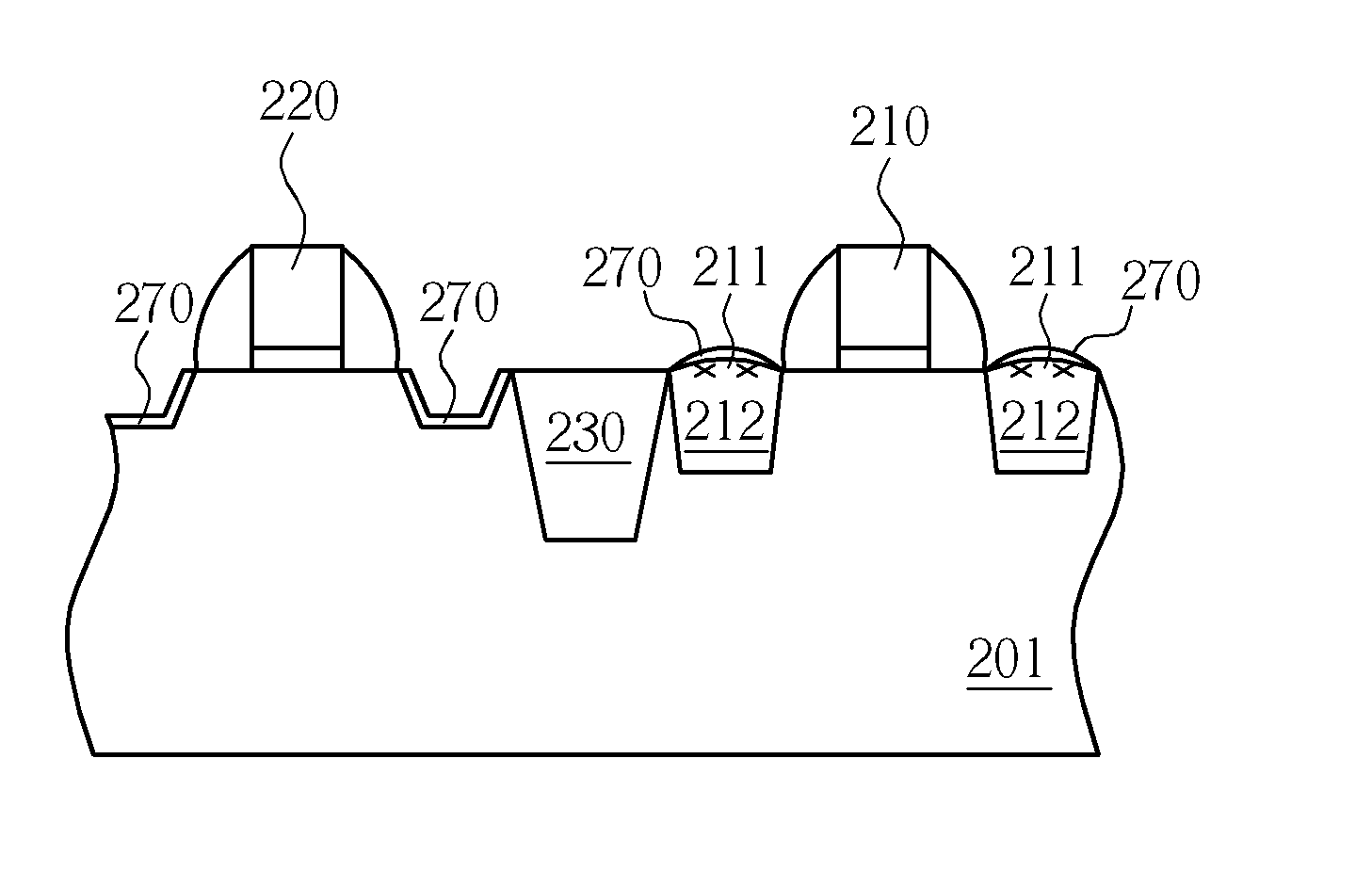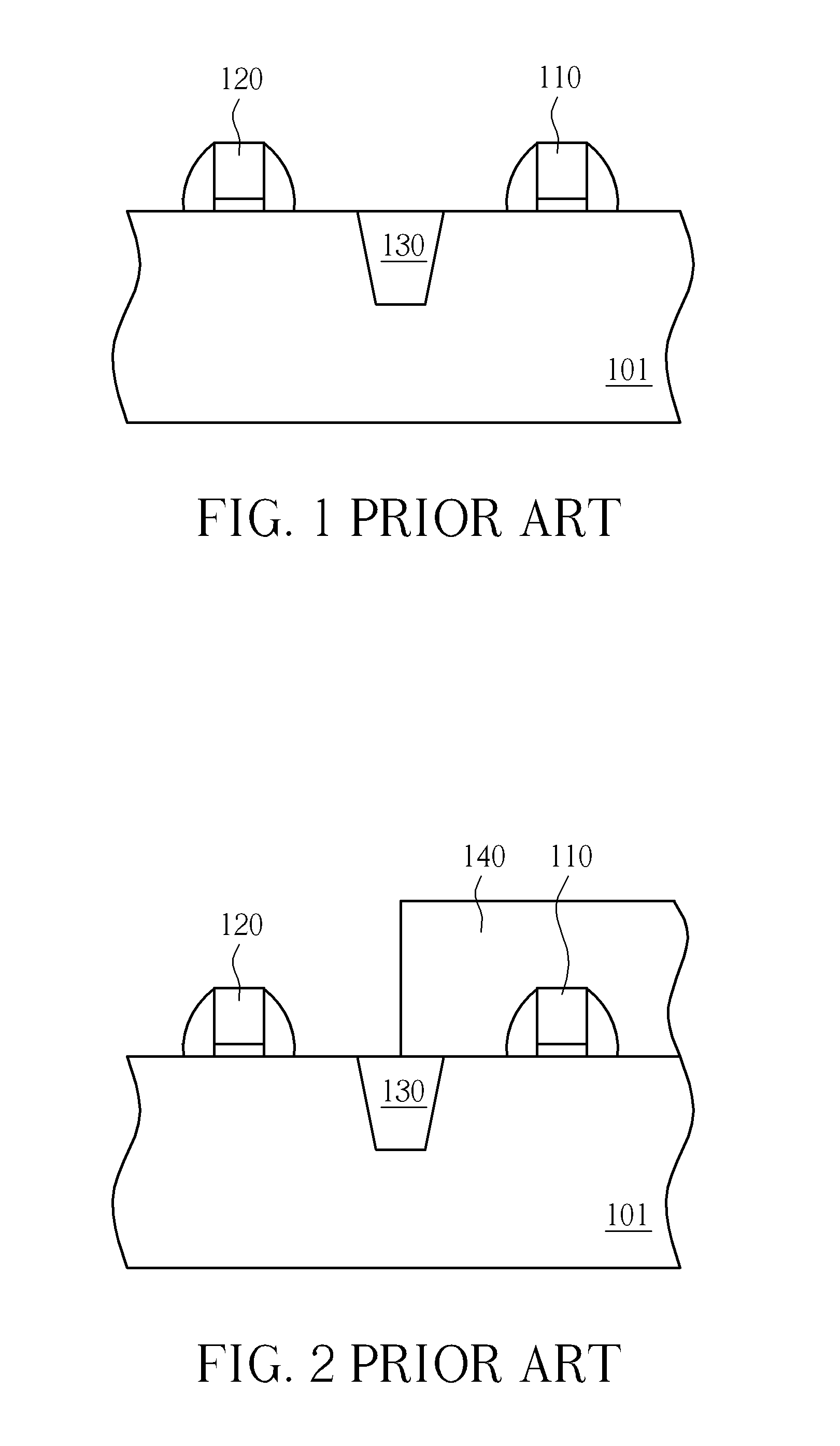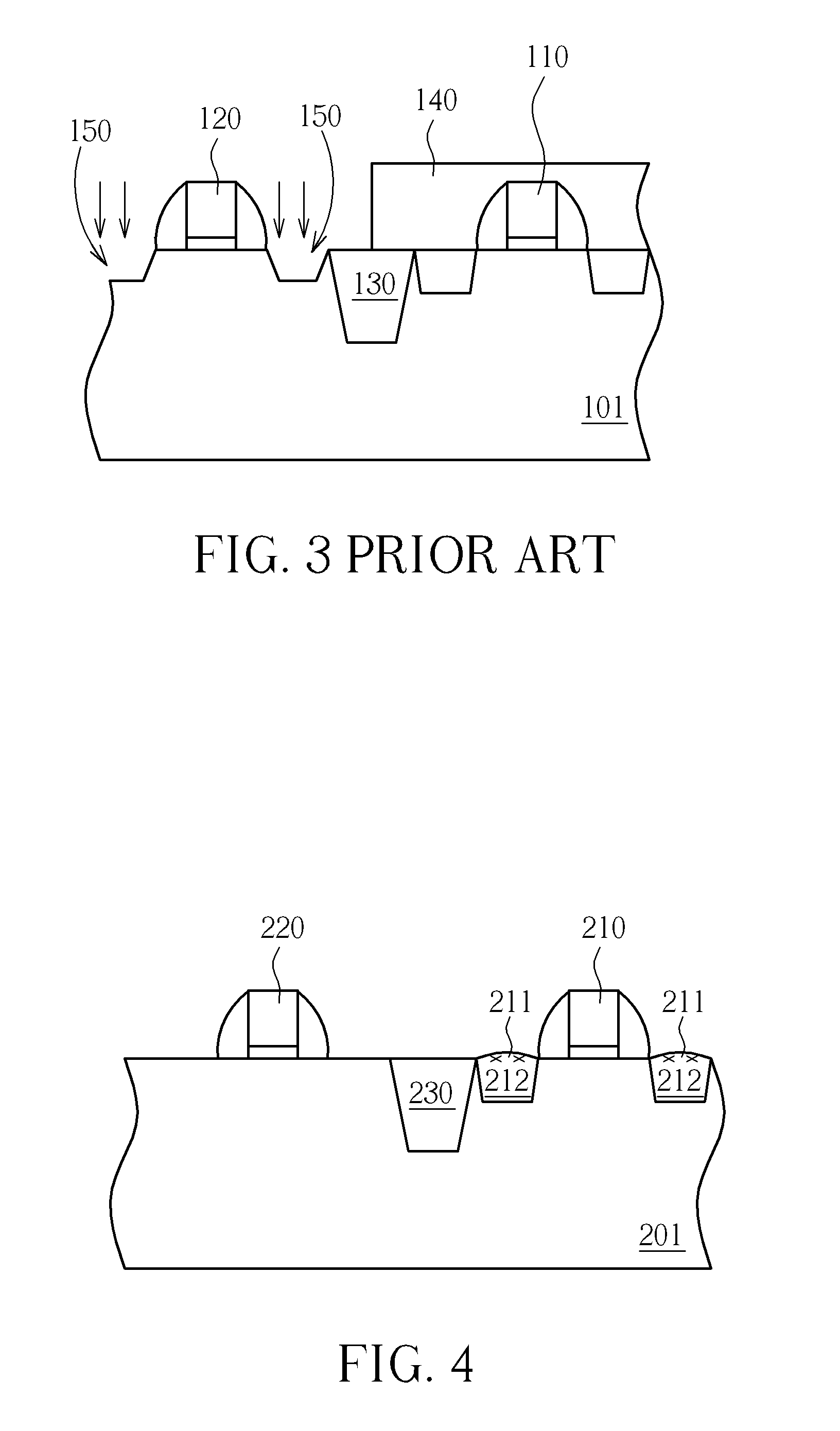Method for selective formation of trench
a trench and selective technology, applied in the field of selective formation of trenches, can solve the problems of high cost of design and manufacturing a new reticle, heavy cost burden on the manufacturer of the additional reticle, and less easy and evenly controlled etching procedure, so as to achieve the effect of reducing manufacturing cost and beneficial etching selectivity
- Summary
- Abstract
- Description
- Claims
- Application Information
AI Technical Summary
Benefits of technology
Problems solved by technology
Method used
Image
Examples
Embodiment Construction
The present invention provides a novel method for selective formation of trenches in a substrate. FIGS. 4-11 illustrate a preferred embodiment of the method for selective formation of trenches in a substrate of the present invention. Please refer to FIG. 4, first a substrate 201 is provided. The substrate 201 is usually a semiconductor substrate, such as Si substrate. The substrate 201 includes at least a first semiconductor element 210, a second semiconductor element 220 and a shallow trench isolation 230 disposed between the first semiconductor element 210 and the second semiconductor element 220 to segregate the first semiconductor element 210 and the second semiconductor element 220. In this preferred embodiment, the first semiconductor element 210 may be a P-type semiconductor element, such as a P-channel MOSFET, PMOS. The second semiconductor element 220 may be an N-type semiconductor element, such as an N-channel MOSFET, NMOS.
The first semiconductor element 210 has already un...
PUM
 Login to View More
Login to View More Abstract
Description
Claims
Application Information
 Login to View More
Login to View More - R&D
- Intellectual Property
- Life Sciences
- Materials
- Tech Scout
- Unparalleled Data Quality
- Higher Quality Content
- 60% Fewer Hallucinations
Browse by: Latest US Patents, China's latest patents, Technical Efficacy Thesaurus, Application Domain, Technology Topic, Popular Technical Reports.
© 2025 PatSnap. All rights reserved.Legal|Privacy policy|Modern Slavery Act Transparency Statement|Sitemap|About US| Contact US: help@patsnap.com



